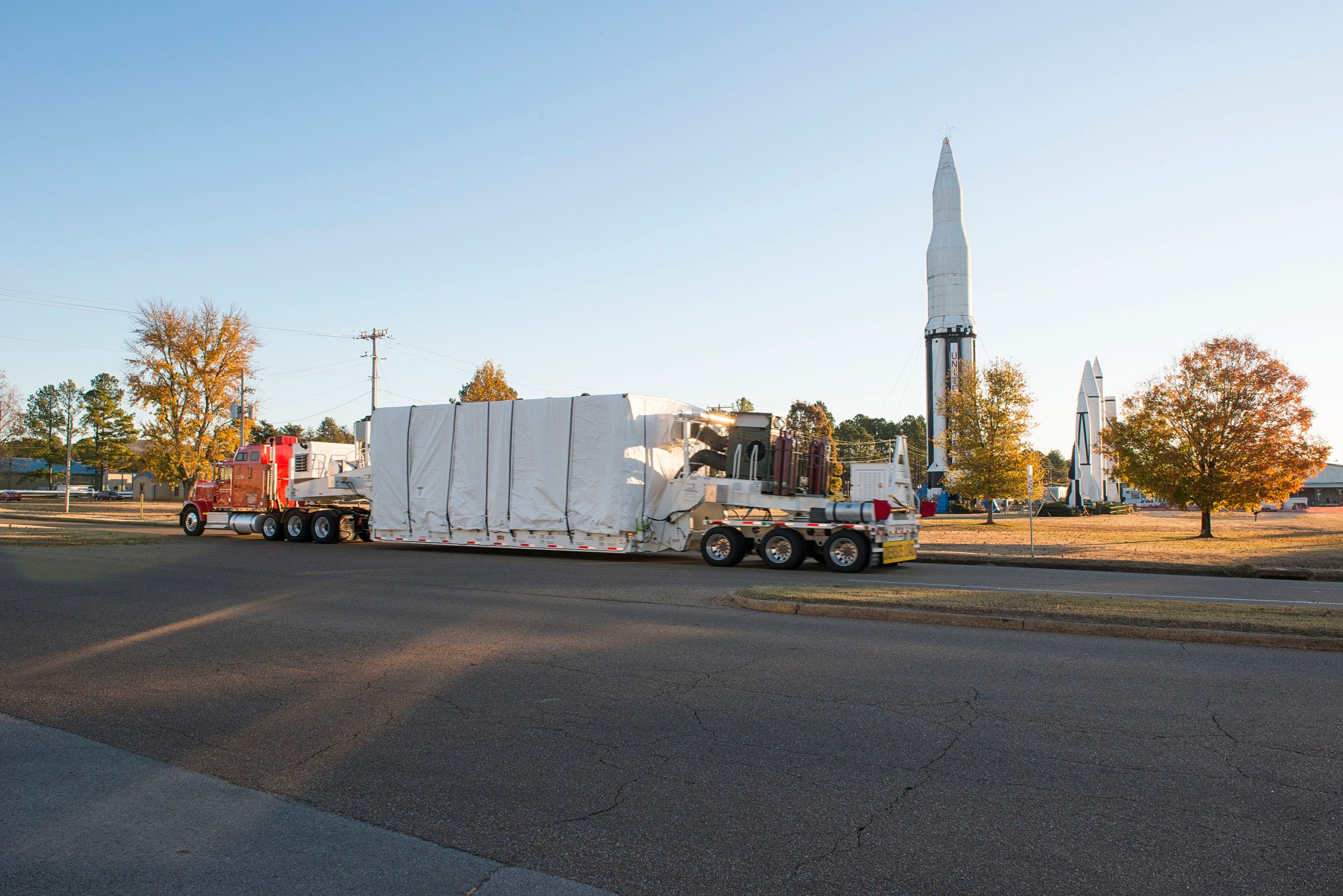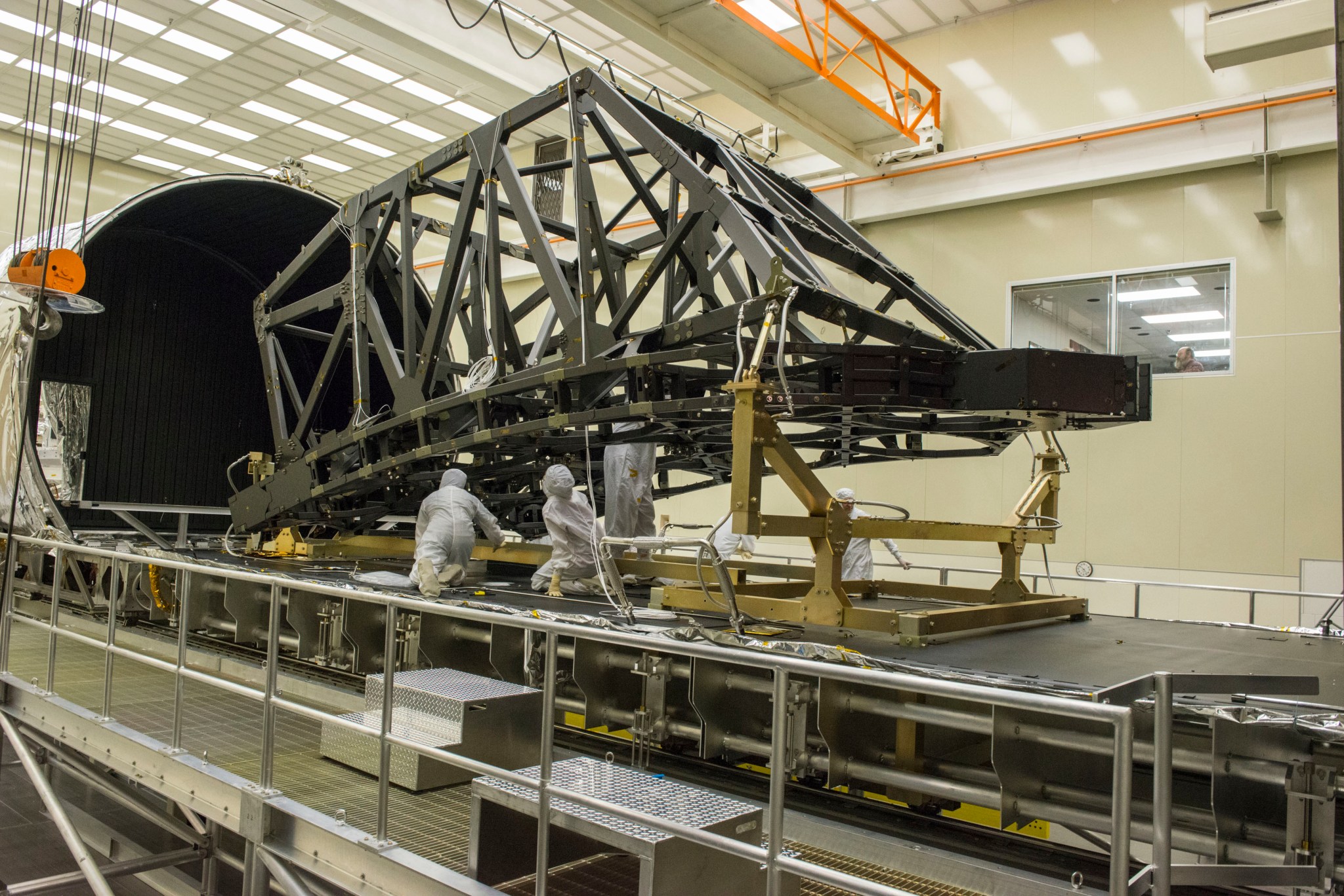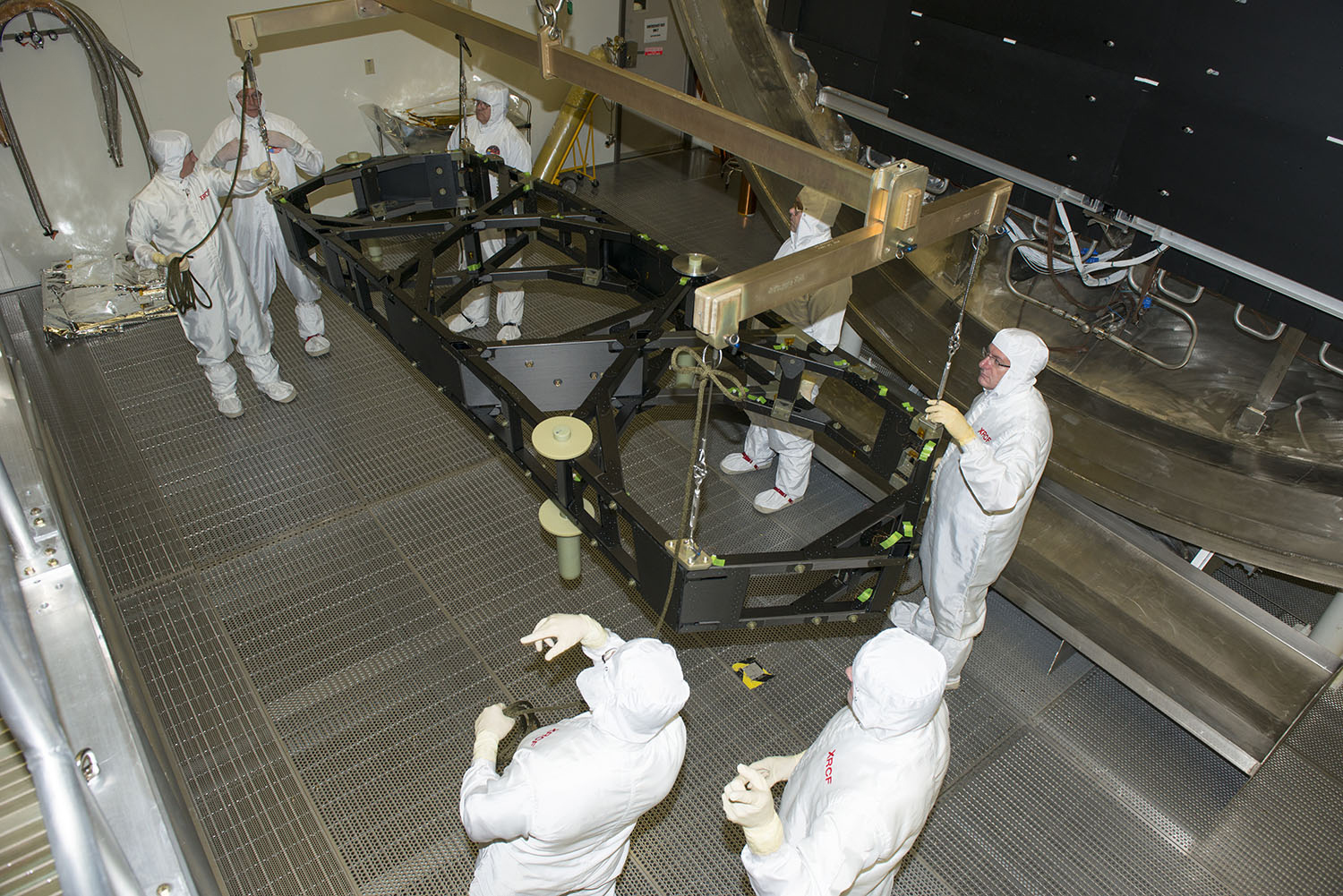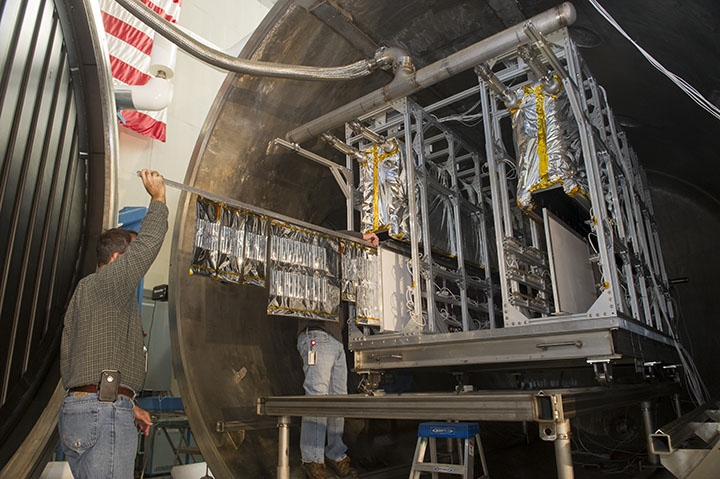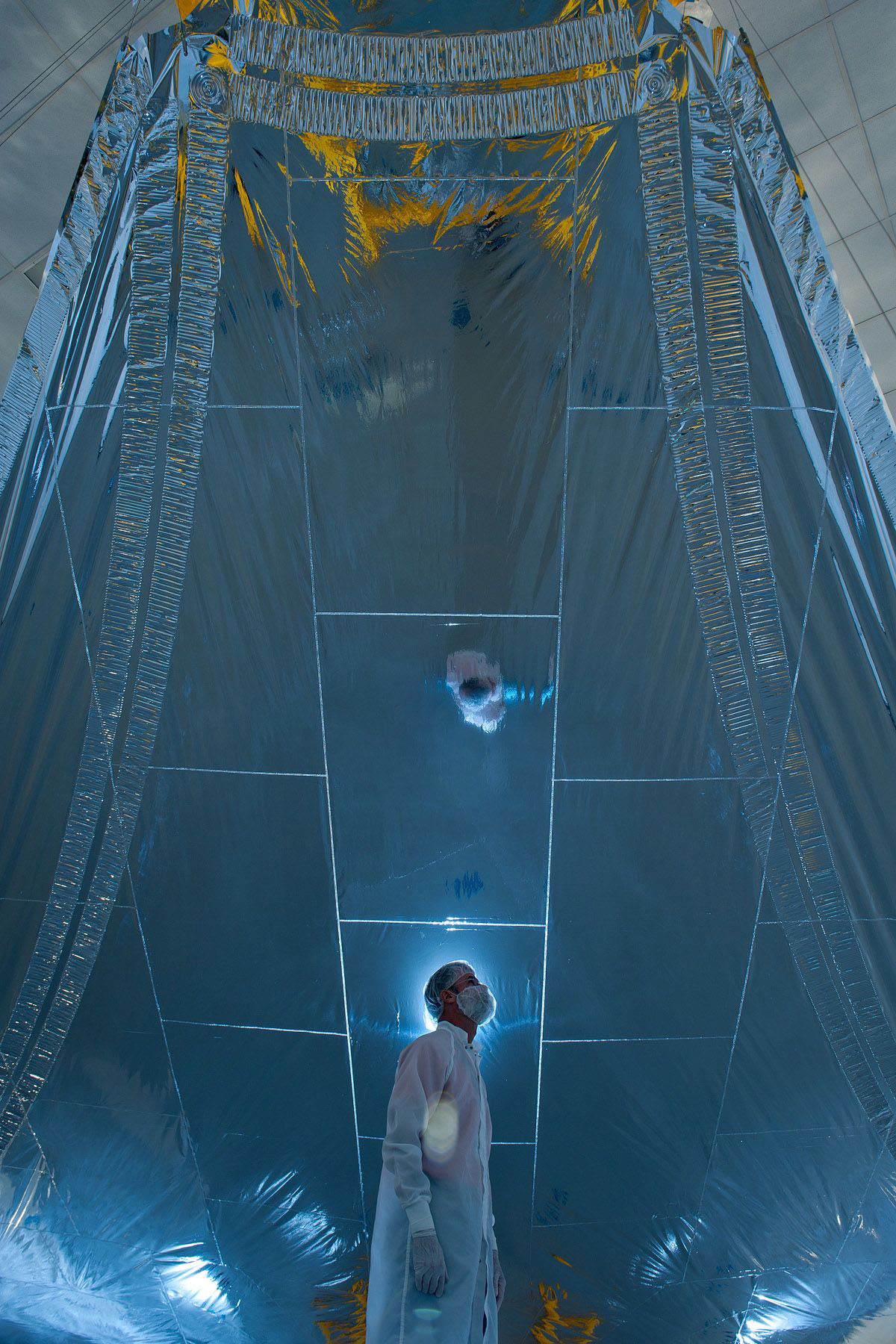Backplane, Mirrors and Sunshield Are Ready To Observe the Most Distant Objects in the Universe
The primary mirror backplane support structure of the James Webb Space Telescope has completed a rigorous testing regime inside the X-Ray and Cryogenic Test Facility at NASA’s Marshall Space Flight Center. The structure is essentially the spine of the massive telescope and is the final component to undergo testing at the facility.
Marshall test facilities have played a key role in ensuring Webb’s future mission success. The X-ray and Cryogenic Test Facility is one of the only places on Earth where such large components like the backplane structure on the Webb telescope can be tested in a simulated space environment.
The Backplane of James Webb Space Telescope Completes Testing at Marshall
“We’ve been planning, developing testing techniques, and evaluating technologies for Webb in this facility for about 10 years, and then actually testing flight hardware since 2008,” said Jeff Kegley, manager of the X-ray and Cryogenic Test Facility at the Marshall Center. “The tests on the hardware went really well and our team is confident the structures will operate optimally in space. We’re glad to have contributed so significantly to the progress of the mission, but sad to see our part come to an end.”
The Webb telescope will be 100 times more powerful than the Hubble Space Telescope, and it will operate farther away from Earth. NASA will not be able to service the telescope; therefore its parts must be light, strong, and durable. To prepare several components of the Webb telescope to meet the extreme temperatures of space, engineers at the Marshall’s X-ray and Cryogenic facility have carefully examined telescope components inside a vacuum chamber that simulates the hyper-cold of space.
James Webb Space Telescope Wings Arrive for Testing at Marshall
During the recent backplane testing, engineers attached 130 diodes to the structure to measure the relative motion of key mounting points. The backplane then went through several cycles from room temperature to minus 400 degrees Fahrenheit.
The telescope’s backplane supports the beryllium mirrors, instruments and other elements. The backplane will hold the 18-segment, 21-foot-diameter primary mirror nearly motionless while the telescope peers into deep space. The mirrors were measured under the X-ray and Cryogenic facility’s super cold conditions from 2008 to 2012. ATK built the backplane structure at its facility in Magna, Utah, under a contract with prime contractor Northrop Grumman. The structure is composed of advanced graphite composite materials mated to titanium and invar fittings and interfaces. Invar is a nickel steel alloy notable for its uniquely low changes due to thermal expansion.
Engineers and Technicians Load Test Coupons into the Environmental Test Facility
The X-ray and Cryogenic Test Facility has also tested other Webb components. In the summer of 2013, Webb’s wings underwent testing in the facility. The wings, also made by ATK, are made up of 900 separate parts of lightweight graphite that fold up allowing the entire mirror assembly to fit inside a rocket for launch.
In addition to the X-ray test facility, the Marshall Center is home to other test facilities that have been vital to the completion of the Webb telescope. The Center’s environmental test facility also contributed important materials testing for samples of Webb’s sunshield.
Sunshield Test Article Fabricated at ManTech International
The sunshield acts like a parasol shading and protecting Webb’s sensitive mirrors and instruments. In space, the sunshield will experience both hot and cold temperatures. For the test, several sunshield samples experienced temperatures ranging from minus 423 degrees Fahrenheit to 170 degrees Fahrenheit. Marshall engineers performed the tests for ManTech International Corporation who recently completed manufacturing of full-scale sunshield test articles that weigh a mere 18 pounds each, yet are almost 45-feet-wide by 70-feet long. The entire sunshield consists of five tennis-court-size, kite-shaped layers that will be folded and deployed once the Webb telescope reaches its destination.
“A sunshield of this size and complexity has never been built before, and it is important that it be tested under the exact thermal and vacuum conditions that it will experience in space,” explained Helen Cole, the Marshall Center project manager for Webb testing. “Our Marshall environmental test facility provides a simulated space environment so that any issues can be identified before the flight sunshield was made. This will ensure the sunshield radiates heat away from delicate scientific instruments designed to operate at cold temperatures in order to detect faint astronomical objects.”
The sunshield must endure a decade of space operations, so the sunshield material, Kapton, also was exposed to space as part of the Materials International Space Station Experiment, or MISSE. The material spent more than four years in orbit, which helped engineers at NASA’s Goddard Space Flight Center, the NASA Center managing the telescope, to conclude the material would perform well as a sunshield. Marshall engineers analyzed the samples when they were returned to Earth.
Marshall has several one-of-a-kind facilities necessary for simulating the extreme environments that space hardware is expected to withstand during space operations. These unique facilities allow Marshall to contribute to NASA’s diverse suite of flight missions, projects and programs that expand humanity’s understanding of the universe.
A joint project of NASA, the European Space Agency and the Canadian Space Agency, the Webb Telescope will observe the most distant objects in the universe, provide images of the first galaxies formed and see unexplored planets around distant stars.
For more information about the Webb telescope, visit:
https://www.nasa.gov/mission_pages/webb/main/index.html
For more information about the X-ray and Cryogenic Test Facility, visit:
https://www.nasa.gov/wp-content/uploads/2016/08/173680main_Cryogenic_fact_sheet.pdf?emrc=6ca3ca



























